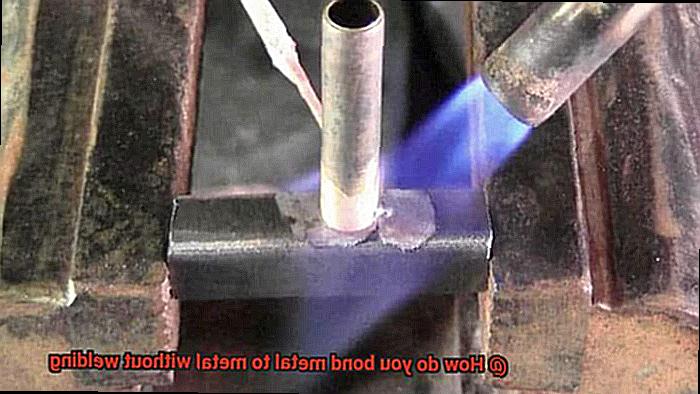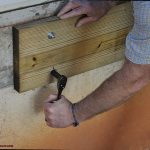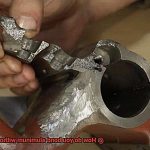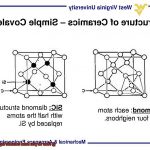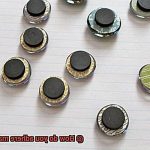Welcome to our blog post where we explore the fascinating world of bonding metal to metal without welding. While welding is a popular method for joining metals, it’s not always the most practical or efficient solution. Fortunately, there are alternative techniques that can create strong and durable bonds between metal surfaces without the need for intense heat and sparks.
One such technique is adhesive bonding. This involves using specialized adhesives designed specifically for bonding metal surfaces together. These adhesives offer exceptional strength and can be used with a variety of metals, including steel, aluminum, and stainless steel. To achieve a successful adhesive bond, proper surface preparation and selecting the right adhesive for the specific metals involved are crucial.
Another option is mechanical fastening. This method relies on mechanical devices like screws, bolts, and rivets to securely join metal parts together. Fasteners come in various materials such as steel, brass, or aluminum, chosen based on specific application requirements. Mechanical fastening is ideal when disassembly and reassembly might be necessary down the line.
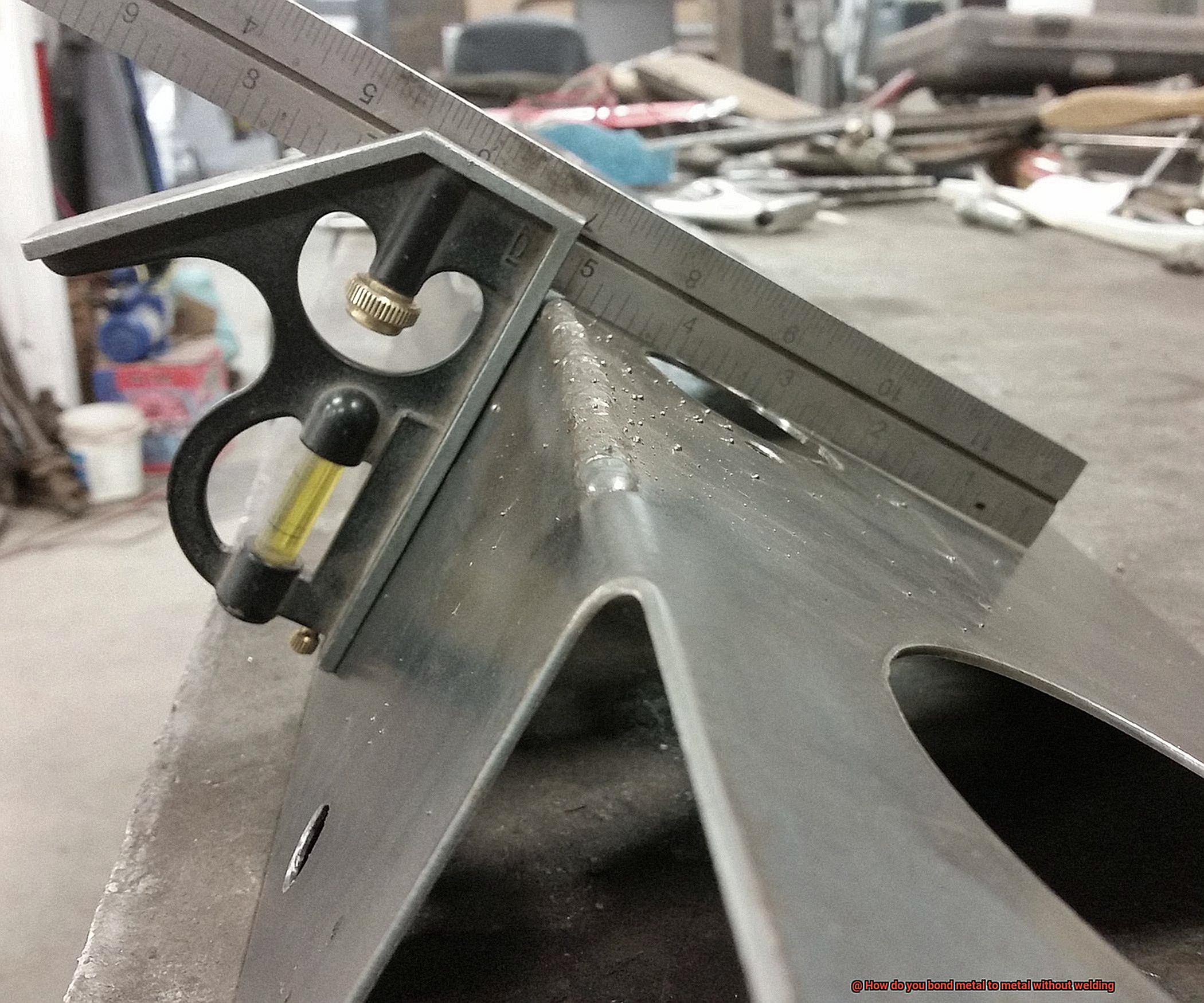
Brazing is yet another technique worth considering. It involves melting a filler metal with a lower melting point than the base metals being joined. The molten filler metal then flows into the joint through capillary action before solidifying into a strong and permanent bond. Brazing is commonly used for non-ferrous metals like copper, brass, and aluminum.
Lastly, there are specially formulated metal adhesives or epoxy resins available that provide high bond strength between metal surfaces. These adhesives not only excel at bonding but also possess resistance to heat, chemicals, and weathering—making them suitable for a wide range of metal-to-metal applications.
In the upcoming sections of this blog post, we will delve deeper into each of these techniques—exploring their advantages, limitations, and best practices. Whether you’re an avid DIY enthusiast or a seasoned professional fabricator seeking alternatives to welding methods—stay tuned to discover the perfect method for bonding metal to metal without welding.
Adhesive Bonding
Contents
Adhesive bonding provides a reliable and versatile solution for joining metal surfaces without welding. This process utilizes specially formulated adhesives to create strong and durable bonds between metal surfaces. In this article, we will explore the adhesive bonding process for metal-to-metal joining, discussing important factors to consider when selecting an adhesive.

The Adhesive Bonding Process:
- Surface Preparation: To ensure successful adhesive bonding, it is crucial to clean the metal surfaces thoroughly and remove any contaminants such as oil, grease, or rust. Additionally, roughening the surfaces enhances adhesion. You can achieve this through solvent cleaning, mechanical abrasion, or chemical treatments.
- Choosing the Right Adhesive: The selection of an appropriate adhesive is paramount for successful bonding. Consider factors such as compatibility with the metals being bonded, temperature resistance, moisture resistance, flexibility, and intended application conditions. Common types of adhesives used for metal-to-metal bonding include epoxy, acrylic, cyanoacrylate (super glue), and polyurethane.
- Applying the Adhesive: The adhesive can be applied in various forms such as liquid, paste, tape, or film onto one or both metal surfaces. It is essential to follow the manufacturer’s instructions for proper application.
- Joining the Metals: After applying the adhesive, bring the metal surfaces together under pressure using clamps or other mechanical devices. This ensures proper contact between the surfaces and allows the adhesive to cure effectively.
- Curing Time: The curing time varies depending on the adhesive type and can range from minutes to hours. Allowing sufficient time for the adhesive to fully cure is vital before subjecting the bonded assembly to stress or load.
Factors to Consider When Selecting an Adhesive:

- Compatibility: Ensure that the adhesive is compatible with the specific metals being bonded to achieve optimal adhesion and bond strength.
- Temperature Resistance: Consider the temperature conditions the bonded assembly will encounter. Some adhesives offer higher temperature resistance than others.
- Moisture Resistance: If the application involves exposure to moisture or water, select an adhesive that can withstand these conditions without compromising bond strength.
- Flexibility: Depending on the application requirements, flexibility may be crucial. Certain adhesives offer more flexibility, allowing for movement or expansion of the bonded assembly.
Mechanical Fastening
In the world of metal bonding, mechanical fastening stands as an unsung hero. Say goodbye to complicated and time-consuming welding techniques; mechanical fastening offers a versatile and efficient solution. In this article, we will delve into the advantages and limitations of mechanical fastening, unveiling the secrets behind this commonly used method.
Advantages of Mechanical Fastening:
Versatility:
Mechanical fastening provides a vast array of options – screws, bolts, rivets, pins, clips, and brackets. This versatility allows for a wide range of applications, from DIY projects to professional fabrication. No matter the project at hand, rest assured that there is a mechanical fastener perfectly suited to meet your needs.
Ease of Installation:
Gone are the days of requiring specialized equipment or extensive training. Mechanical fastening can be effortlessly achieved with simple tools. Whether you are a seasoned professional or a casual DIY enthusiast, you can confidently tackle metal bonding projects without breaking a sweat.
Accessibility:
Unlike welding, which demands high temperatures and specific equipment, mechanical fastening can be executed using readily available tools. This accessibility makes it an attractive option for professionals and amateurs alike.
Limitations of Mechanical Fastening:
Strength Requirements:
While mechanical fasteners offer reliable strength in most applications, there may be instances where welding or other bonding methods are necessary to achieve higher load-bearing capacities. It is crucial to consider the specific strength requirements of your project before opting for mechanical fastening.
Environmental Considerations:
In certain environments with extreme temperature variations or exposure to corrosive substances, the integrity of mechanical fasteners may deteriorate over time. Proper assessment of environmental conditions is essential in selecting appropriate materials or coatings to ensure long-term durability.
Vibration and Movement:
Applications involving constant vibration or movement may render mechanical fasteners unsuitable on their own. In such cases, additional reinforcement or alternative bonding methods, such as adhesives or soldering, may be required to ensure a secure connection.
Brazing
In a world filled with metal bonding options, brazing stands out as a reliable and efficient alternative to welding. With the ability to join a wide range of metals like steel, copper, brass, and aluminum, brazing has become indispensable in industries such as automotive, aerospace, and plumbing. But what exactly is brazing, and why should you consider it for your metal bonding needs? Let’s dive into the world of brazing to uncover its process and advantages.
The Brazing Process:
Brazing involves the use of a filler material known as brazing alloy. This alloy melts at a lower temperature than the base metals being joined. The process starts with meticulous cleaning of the surfaces to be joined, ensuring a precise bond. The parts are then aligned and clamped together before heating the joint area using a torch, furnace, or induction heating method. As the joint reaches the right temperature, the brazing alloy is introduced. It flows through the joint area by capillary action and solidifies, forming a robust bond.
Advantages of Brazing:
- Versatility: Brazing can join different types of metals, making it ideal for various applications.
- Strength and Durability: Brazed joints are strong and durable, with excellent resistance to vibration and thermal cycling.
- Minimal Distortion: Unlike welding, brazing avoids melting the base metals, reducing the risk of distortion or damage to the parts being joined.
- Energy Efficiency: Brazing operates at relatively low temperatures, reducing energy consumption and potential heat-related issues.
- Choice of Alloys: Different brazing alloys can be used to achieve desired strength and performance characteristics based on specific requirements.
Soldering
Whether you’re an aspiring craftsman or a seasoned professional, soldering offers a versatile, precise, and visually appealing method for joining metals. In this blog post, we will delve into the process of soldering, explore its advantages, and discover why it has stood the test of time in various industries.
The Soldering Process:
Imagine two metal surfaces needing a bond without the harshness of welding. Enter soldering, the solution to your bonding needs. Using a soldering iron or torch, you delicately heat a filler metal called solder until it transforms into a molten state. This liquid metal is then carefully applied to the metal surfaces, creating a strong and durable bond as it cools and solidifies. It’s like witnessing magic interwoven with scientific precision.
Versatility at Its Finest:
One of soldering’s greatest strengths lies in its versatility. Unlike welding, which demands similar melting points for the metals being joined, soldering allows for the seamless union of different types of metals. The melting point of solder is typically lower than that of the metals being bonded. Therefore, whether you’re working with copper, brass, aluminum, or steel, soldering provides a solution for all.
Aesthetic Appeal:
Soldered joints not only possess functionality but also appeal to the eye. In contrast to welding’s visible weld beads and discoloration on metal surfaces, properly executed soldered joints can be smooth and practically invisible. This makes soldering an ideal choice for applications where appearance matters, such as jewelry making or assembling electronic circuit boards.
Ease of Use:
Newcomers need not fear soldering. With the right tools and techniques, even beginners can achieve successful joints with minimal effort. Unlike other bonding methods like riveting or brazing, soldering offers a relatively quick and straightforward solution. Moreover, it eliminates the need for extensive preparation or post-bonding processes like cooling or cleaning, making it a convenient choice for many applications.
Strength Considerations:
While soldered joints are generally strong and durable, it’s crucial to consider your project’s specific requirements. In high-stress applications or situations demanding maximum strength, welding or alternative bonding methods may be more suitable. The strength of a soldered bond depends on factors such as the type of solder used, the cleanliness of the metal surfaces, and the skill of the individual performing the soldering.
Metal Adhesives with Conductive Properties
Metal adhesives with conductive properties are transforming the way we bond metals together. In this blog post, we will explore the advantages of using these adhesives over traditional welding methods. Get ready to be amazed.
Advantage 1: Versatility
Metal adhesives with conductive properties are like chameleons in the bonding world – they can adapt to a wide range of metal types and shapes. Whether it’s stainless steel, aluminum, or copper, these adhesives have got you covered. No more searching for the right welding technique or equipment – one adhesive fits all.
Advantage 2: Safety First
Say goodbye to the dangers of welding. High temperatures, sparks, and toxic fumes are no longer a concern when using metal adhesives. Avoid burns and harmful gas inhalation by opting for these safer alternatives. Adhesives eliminate the need for intense heat, making them a safer option for professionals and DIY enthusiasts alike.
Advantage 3: Cost-Effectiveness
Forget about burning a hole in your pocket with expensive welding equipment. Metal adhesives offer a cost-effective solution by eliminating the need for pricey machinery. With just the adhesive itself and some basic tools for surface preparation, you’re good to go. Save money on constant gas or electrode refills – your wallet will thank you.
Advantage 4: Strong Bonds
But can adhesives really compete with the strength of a weld? Absolutely. Metal adhesives with conductive properties are specially formulated to provide exceptional bonding strength. These adhesives create a molecular bond between metal surfaces, resulting in connections that can withstand high stress and vibrations.
Advantage 5: Aesthetically Pleasing
If you’re a fan of clean and seamless finishes, metal adhesives are your new best friend. Unlike welding, which often leaves visible marks and discolored areas, adhesives create practically invisible bonds. Your finished product will look sleek and professional.
Magnetic Bonding for Temporary Connections
Magnetic bonding, a method of joining metal surfaces without welding, is here to revolutionize the world of temporary connections. Unlike welding, which creates a bond that is nearly impossible to undo, magnetic bonding offers easy detachment for ultimate convenience. This makes it perfect for applications where frequent assembly and disassembly are required.
One advantage of magnetic bonding is its temporary nature. Say goodbye to the struggle of breaking apart welded surfaces. With magnetic bonding, components can be effortlessly repositioned or removed without breaking a sweat.
Another advantage is the cost-effectiveness and flexibility of magnetic bonding. No need for high heat or specialized equipment; it’s a simple and affordable solution. Plus, magnetic bonding eliminates the need for additional materials like adhesives, simplifying the bonding process.
But let’s not forget about the limitations. Magnetic bonding may not withstand high loads or intense vibrations, making it unsuitable for applications requiring extreme durability. It’s important to consider this when deciding if magnetic bonding is the right fit for your project.
In conclusion, magnetic bonding offers a fantastic alternative to welding for temporary connections between metal surfaces. It provides easy detachment, cost-effectiveness, and flexibility. However, keep in mind its limitations regarding strength and durability.
Factors to Consider when Choosing a Bonding Method
The world of metal connections is about to be revolutionized by the incredible power of magnetic bonding. Say goodbye to the hassle and permanence of welding, and say hello to effortless metal joining without the need for permanent attachments. It’s like a seductive dance between metals – easy to detach and reposition whenever you please.
Magnetic bonding offers flexibility and cost-effectiveness, making it a superior alternative to welding. Unlike the expensive equipment and scorching heat required for welding, magnetic bonding is a simple and affordable solution. No additional materials like adhesives are needed; just let the magnets work their magic.
However, before diving headfirst into the magnetic bonding hype, it’s crucial to consider its limitations. While it provides convenience and versatility, magnetic bonding may struggle under heavy loads or intense vibrations. So, if your project requires extreme durability, you might want to think twice before committing to magnetic bonding.
Now, let’s explore the factors to consider when choosing a bonding method for joining metal without welding. Here are some key considerations:
- Type of metals being bonded: Different metals have unique properties that may require specific bonding methods. Bonding similar metals (steel to steel or aluminum to aluminum) may be easier than bonding dissimilar metals (steel to aluminum).
- Strength requirements: Some bonding methods offer stronger and more durable bonds than others. If your application demands high strength, structural adhesives or mechanical fasteners like bolts or rivets may be more suitable.
- Operating conditions: Factors like temperature, humidity, chemical exposure, and vibration can impact the bond’s performance. Certain bonding methods are more resistant to these conditions than others.
- Desired appearance: Some bonding methods leave visible marks or noticeable seams, which may not be desired for certain applications. Methods like adhesive bonding or friction stir welding provide a seamless and aesthetically pleasing finish.
Benefits of Bonding Metal to Metal without Welding
In the world of metalwork, welding has long been the go-to method for joining metals together. However, there is a growing trend towards bonding metal to metal without welding, and for good reason. This alternative method offers a host of benefits that are worth exploring. In this article, we will delve into the advantages of bonding metal to metal without welding and why glue can be a suitable alternative for joining metals.
One of the primary advantages of bonding metal to metal without welding is the versatility it offers. Unlike welding, which is limited to specific metals and requires specialized equipment, bonding allows for the joining of different types of metals. Whether you need to bond aluminum to steel or copper to brass, adhesive bonding provides the flexibility to work with various combinations of metals in different applications.
Welding can be an expensive process that often requires skilled labor, specialized equipment, and consumables. On the other hand, bonding metal to metal without welding can be a more cost-effective alternative. Adhesive bonding, for example, requires minimal equipment and can be performed by relatively unskilled labor. This eliminates the need for expensive consumables and reduces overall production costs.
For industries where aesthetics play a crucial role, such as automotive or architectural applications, bonding metal to metal without welding provides a seamless finish that enhances the overall appearance of the joined pieces. Welding often leaves visible seams or weld marks on the surface of the metal, which can be undesirable from an aesthetic standpoint. Adhesive bonding eliminates this issue, resulting in a clean and polished look.
Contrary to popular belief, adhesive bonding has been proven to provide excellent strength and durability when properly executed. In fact, in some cases, bonded joints can have higher strength than traditional welded joints. Adhesives have the ability to distribute stress evenly across the entire bonded area, resulting in improved load-bearing capabilities. Additionally, adhesive-bonded joints are less prone to fatigue failure compared to welded joints.
Welding often imposes limitations on the design and construction of metal structures due to the need for heat-resistant materials and complex joint configurations. Bonding metal to metal without welding offers greater design flexibility as it does not require high-temperature resistance and can accommodate various joint geometries, including curved or irregular shapes. This allows for more innovative and efficient designs, especially in industries such as aerospace where weight reduction and aerodynamics are critical.
Welded joints can create vulnerable zones prone to corrosion, especially when dissimilar metals are involved. Bonding metal to metal without welding using appropriate adhesives can provide a protective barrier against corrosion, preventing the formation of crevices and minimizing the risk of galvanic corrosion. Additionally, adhesive bonding eliminates the heat-affected zone (HAZ) that occurs during welding, further reducing susceptibility to corrosion.
ncTYiKJveEM” >
Also Read: How To Fill Holes In Metal Without Welding?
Conclusion
In conclusion, when it comes to bonding metal to metal without welding, there are several effective methods available. Adhesive bonding is a popular choice, utilizing strong adhesives specifically designed for metal surfaces. These adhesives create a durable bond that can withstand various conditions and environments.
Another option is mechanical fastening, which involves using screws, bolts, or rivets to securely join two metal pieces together. This method provides strength and stability while allowing for disassembly if needed.
For those seeking a more innovative approach, laser bonding offers a precise and efficient way to bond metal without the need for heat or soldering. By using a high-powered laser beam, the metal surfaces are melted and fused together, creating a strong and seamless connection.
Furthermore, electroplating can be used to bond metals by applying a thin layer of one metal onto another through an electrochemical process. This not only enhances the appearance but also improves corrosion resistance and durability.
Lastly, brazing is an excellent technique for joining metals with the use of a filler material that has a lower melting point than the base metals. The filler material is heated until it melts and flows into the joint area, creating a solid bond when cooled.
In summary, whether you choose adhesive bonding, mechanical fastening, laser bonding, electroplating or brazing, there are numerous options available to bond metal to metal without welding. Each method offers its own advantages depending on the specific application requirements.

